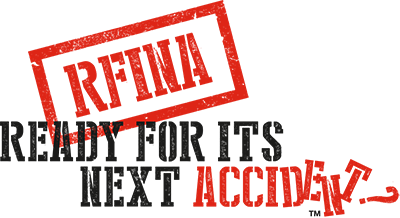Capacity at the Manufacturers
The last post discussed industry capacity, with the emphasis on the physical and knowledge capacity of the repair side to do the highly technical work that is required for correct repair of modern vehicles.
The other two participants in the overall repair industry, the manufacturers making and selling the cars and the insurance companies who are involved in paying for the majority of repairs also have serious capacity issues.
Of these two the manufacturers are probably facing the bigger challenge. They are prescribing more and more detailed and rigorous repair procedures but have not addressed the practicalities of performing these repairs. In common with all other very large organizations they have to find a way to get the understanding and belief in these needed repairs down through their organizational chains to the people who are actually tasked with the repairs. Just as with the repairers, organizational culture gets in the way. In addition to a very long communication chain, they are faced with a number of profit seekers along that chain
The manufacturers do not own the dealerships that sell their cars, nor do they employ the people working in the service departments of these dealerships. The dealer principle is pressured and incentivized to sell as many cars as possible. In turn his service department is pressured and incentivized to keep customers reasonably happy while making as much money as possible. The service manager has to report to the fixed operations manager and the important things in his report will be; are the customers reasonably happy and are we making money. The easiest way to make money is to do what you know how to do, as quickly as possible.
If a new recalibration procedure involves 4 to 6 hours and results in a correction that is mostly invisible to the driver there is not a lot of satisfaction in the procedure and there will be a resistance on the part of the buyer, whether owner or insurance company to pay for those hours. The result will be a lot of talking and negotiating to get to an agreement to do the work for perhaps a 5 hour invoice. But the flat rate technician is accustomed to booking 5 billable hours in 2 to 3 hours and he will feel that he is losing if he is paid only 5 hours for the actual 5 hours he puts in (the service department model also depends on his billable hours). Nobody is making money under these conditions.
The collision repair shop that calls in with a request for a specific calibration can easily be told ’No it’s ok, you don’t have to do that calibration.’ The collision shop is happy to hear that because they would not make any money from the sublet calibration and they can get the car through much faster if they don’t do it. The insurance company is not going to complain about a lower bill, But does it really need to be done? The answer now is yes. The technology has been built in the cars and current requirements are that this calibration has to be done in specified circumstances. The capacity issue is that these requirements have been set by one department, or silo, without consultation with other departments about how to implement the required procedures at the scale required.
One long term solution may be to improve the technology so that it becomes much more self-calibrating. One very difficult interim solution will be for the manufacturers to recognize that technology has outgrown their current business model and a new model is needed for this part of their operation. Perhaps off site dedicated calibration centers, perhaps release of information to the aftermarket to allow entrepreneurs to set up these dedicated calibration facilities.
Once again; I could go on, but then you will stop reading. The existing problems are not at all trivial and a lot of collaboration will be needed to reach solutions.
